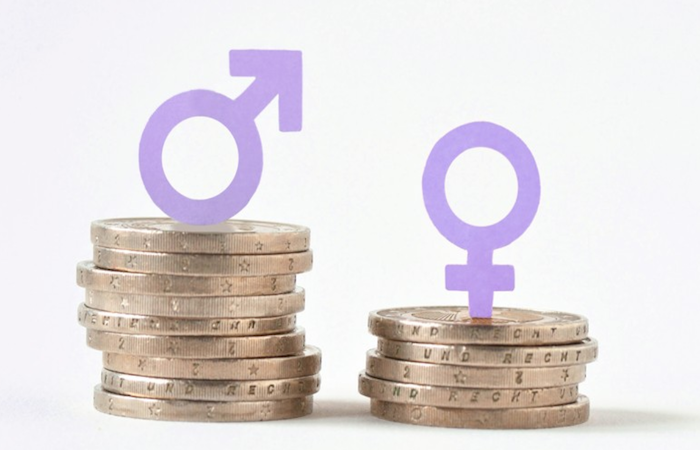
The pandemic has been the best and worst of times for women.
More women have been furloughed than men since Covid-19 struck, according to HM Revenue and Customs (HMRC) statistics published in February 2021, with 2.32 million women on the scheme at the end of January 2021, compared to 2.18 million men. Additionally, more women work in fields such as hospitality and tourism, which have been hit badly by the pandemic.
The House of Commons Women and Equalities Committee has voiced concerns that the government’s priorities for recovery are highly gendered, with slogans like ‘build, build, build’ and investment plans that are skewed towards male-dominated sectors.
The government’s decision to remove the requirement for large employers to report on their gender pay gaps in 2020 was another blow. The TUC’s general secretary Frances O’Grady said: “This decision sends a worrying message about the importance given to gender equality. It’s not just a nice addition in good times that can be shelved when the going gets tough.”
Thankfully, the requirement to report on gender pay gaps has been reinstated this year. Employers now have until 5 October 2021 to report their gender pay gap information for the 2020/21 reporting year.
More encouragingly, despite the pressures that employers are under, advisers are seeing organisations making diversity and inclusion (D&I) a priority. “The pandemic and the Black Lives Matter piece have raised the bar on diversity and inclusion, which have come to the fore of a lot of HR and board agendas,” says Justine Woolf, director of consulting at Innecto.
Michelle Sequeira, UK diversity, equity, and inclusion consulting lead at Mercer, agrees: “I am optimistic because we deal with many clients and not one of them has pushed back [on gender pay gap reporting]. I lead the D&I practice and it is busier than ever because clients see the importance of this.”
Sequeira adds: “[Organisations] are starting to think about environmental, social, and corporate governance (ESG), and obviously D&I is linked to ESG. A lot of shareholders are expecting to see progress being made in these areas. If you look at the FTSE 250, they are being asked what they are doing about gender pay gaps and D&I.”
Here are some ideas for employers who want to make progress on closing their gender pay gaps.
Scrutinise the data
PWC always conducts an equal pay review alongside its salary review, as part of its year-end process. Sarah Churchman, PWC UK’s chief inclusion, community, and wellbeing officer, says: “That piece of work is taking place now and our reward leader is sitting down with each of our businesses to go through all the findings. If there are any differences, we need to make sure we are working towards closing them, if not closing them completely, by 1 July.”
Churchman adds: “I think [employers] need to have that continuous review because, in our experience, these gaps can appear or grow unintentionally. Only if [they] have the data can [they] take corrective action.”
Having the data in itself isn’t enough, agrees Woolf. “It’s about how [employers] use the data, how [they] create action plans, explain narratives, and monitor changes.”
Remember the bigger picture
Gender pay reporting isn’t an exact science. It’s important to take a longer-term view, instead of looking at year-on-year numbers, where even something like the appointment of a male successor to a female chief executive can make the gap look worse.
Putting the right initiatives in place can even make the gap appear worse in the short term, says Woolf. “We looked at an [organisation’s] five-year trend and it couldn’t see why it hasn’t improved. It was because even though it had recruited more females, it had more males in the middle of the organisation and that was distorting the overall pay picture.”
Make it easier for women to work
With many traditional support pillars stripped away in the pandemic – nursery, school, family help – many women have understandably struggled to carry on working. If women have no choice but to quit their jobs or reduce their hours, it will have a knock-on effect on the gender pay gap. “Schools closing was hard and it seemed to be harder for our working mothers than it was for our working fathers at every level of our organisation,” says Churchman.
Since PWC performance reviews take into consideration where consultants spend their time in parts of the business, the organisation has created a code to which people can charge their time when they cannot manage their full hours in a day. “It was designed to take a bit of pressure off people feeling they had to make up their hours after they’d put their kids to bed at night,” says Churchman.
Treat the pandemic as an opportunity
The pandemic has forced us to rethink so many aspects of how we work. “Most organisations have a bigger representation of females in junior grades, and at the mid-manager level and above it flips to more male representation,” says Sequeira.
Post-pandemic, there’s an opportunity to rethink work, making it possible for men and women to share the childcare, creating greater parity and closing the pay gap. As Dr Duncan Brown, principal associate at the Institute for Employment Studies says: “HR has given some great support to working mothers who have taken the bulk of home-schooling and caring duties and, as a result, suffered over the past year. After the pandemic, they have to continue that. We must keep being innovative to keep delivering decent support to parents. I think equalising shared parental leave is a big one. I hope to see many more employers following Unilever’s example and biting the bullet.”
Brown concludes: “Those hands-on managers who insisted on people being at their desk and essentially side-lined working mothers: their arguments are done. There has been a big step forwards in terms of flexible working. [Employers] have to grab hold of that and expand it.”